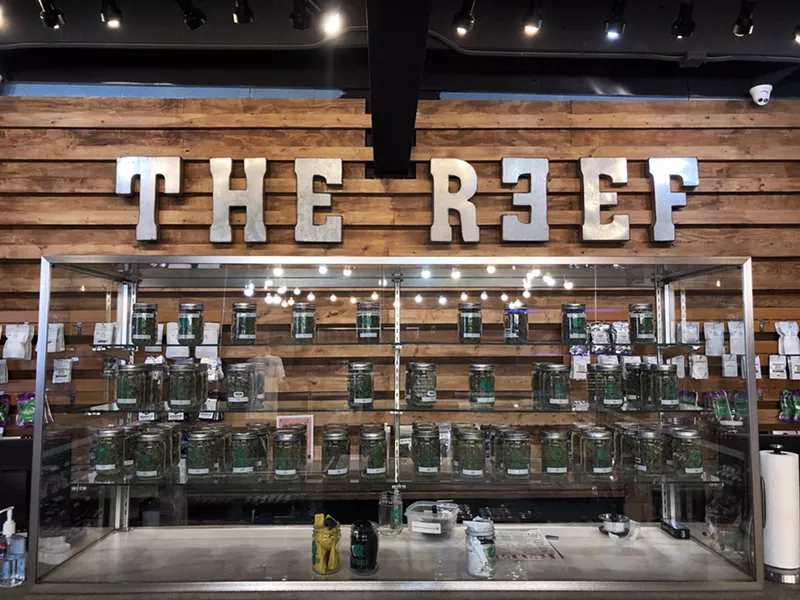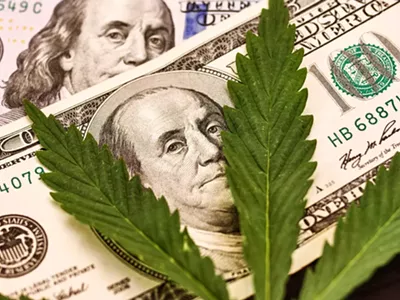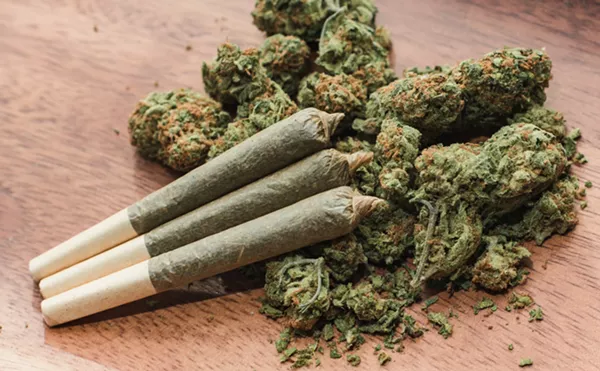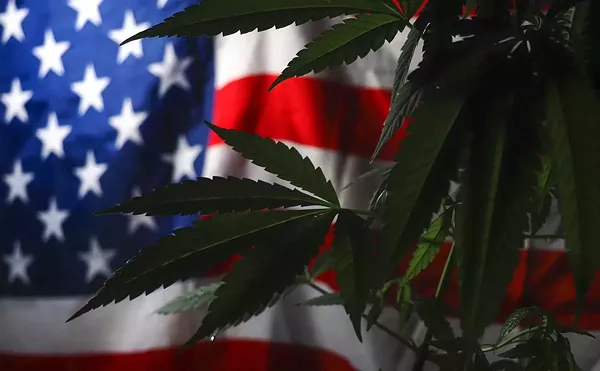
The landscape of marijuana has starkly changed around here these past few years. We haven't cleanly emerged, but a view of the landscape shows a fledgling legal marijuana industry starting to come together.
Jeffrey Hank, the attorney who led the 2016 MILegalize initiative, expressed an emerging optimism at the Marijuana Regulatory Agency public meeting last week: "Things are moving a lot better now; they're moving fast, people are more friendly, everything just seems to be coming together."
That was Hanks' response to the MRA after it took over from the ineffective Bureau of Medical Marihuana Regulation in April. Last week's first public meeting of the agency served to introduce the various officers of the agency — each of them discussed what their office does and what their interface with the public will be. There was a lot of talk about streamlining processes to make them more efficient.
One change announced was a method for medical marijuana patients to apply for and get certification in one day that will come online. It that comes together, it will be revolutionary. One of the biggest complaints from patients early on was that it took months for the patient certification cards to get to patients. Hmmm, now that I think about it, taking way too long for things to happen has been a hallmark of the state marijuana bureaucracy.
Now it seems a much more tolerant state administration than we had when Republican Rick Snyder was governor and Republican Bill Schuette was attorney general. With them, for several years the state took the attitude that the medical marijuana law may say you can have it, but it doesn't say you can buy it at a store. It came down to where you live. In Wayne and Washtenaw counties, officials were tolerant. In Oakland and Genesee counties, they weren't. Even so, in Detroit, dispensary owners still had to look over their shoulders
There were reportedly near 200 dispensaries in Detroit. Many looked like lame fly-by-night operations. There were small storefronts with tiny, often packed, waiting rooms and some pretty tight spaces with cases of flowers. Possibly the best thing about them is they were located mostly in formerly empty buildings. They were built to move product and take advantage of the vague legalities of the first years of medical legalization. Dispensaries weren't technically legal, but they weren't explicitly illegal. Some police were raiding and robbing the locations.
In some suburbs, police created forged documents in order to enter dispensaries and collect "evidence." People were charged with crimes for activities they believed to be legal under the law. Some weren't even allowed to use medical status as a defense.
Most of that has changed now — for better or for worse, depending on your perspective. It started when the state legislature decided to pass laws to set up the system for legal sales in Michigan. Around the same time, Detroit was pushed by angry citizens to pay closer attention to the proliferation of marijuana storefronts. It took a couple of years of legal maneuvers and litigation to get a handle on that.
What we see more of now are state-licensed provisioning centers that look pretty nice in comparison to the old style. The few locations that I've been to include roomy waiting areas with screens to watch, and magazines to read as you bide your time. The rooms with the provisions in them seem pretty standard, with stations that each have all of the supplies within an attendant's reach. The main problem is that they don't always have the products one seeks in stock. They always have some kind of flowers available. They don't always have supplies of extracts, oils, and edibles on hand.
Another facet of the emerging industry is that it actually has an organization, the Michigan Cannabis Industry Association, representing it through education, lobbying, and helping to maintain standards.
The marijuana industry is concentrated in southeast Michigan. That makes sense because that's where the population is highest. A look at the map of licensed marijuana businesses provided by the state shows that. There are secondary clusters around Flint and Ann Arbor. Where they are not clustered, businesses are generally not far off the I-75 and I-94 corridors. The map is interactive and the window on the left allows one to locate every licensed business in the state.
We'll have an even clearer idea of where the state industry is going soon. Jennifer Piggott, the Adult-Use Licensing Section manager, said that emergency rules will be released later this month and that license applications will be available this summer. That's ahead of the legal deadline of Dec. 6. She also said that the MRA will begin accepting adult-use applications this fall.
We're moving forward with dispatch. Let's hope they get it right. One of the biggest failings of the medical marijuana implementations was not to license growers first. It takes at least four months to get a first crop in. That should have been a no-brainer for regulators to envision. What we got the first time around was stores without legal suppliers.
Now we're moving forward with lessons learned. We still need rules for mircobusinesses. That should be the road for the smaller local producers to get their foot in the door in the industry. It still takes a lot of money to get in on what is already set up. And with the slow route to getting things started, there are several licensed entities listening to overtures from multi-state players to take over their licenses. I've heard this from a couple of lawyers and a few others. Some people who had hoped to resist overtures until the market picked up are facing the reality (and opportunity) of possibly selling out.
Marijuana in Michigan started out as a homegrown idea. It's going to take more ingenuity to keep it that way.
It's a new era for marijuana in Michigan. Sign up for our weekly weed newsletter, delivered every Tuesday at 4:20 p.m.







